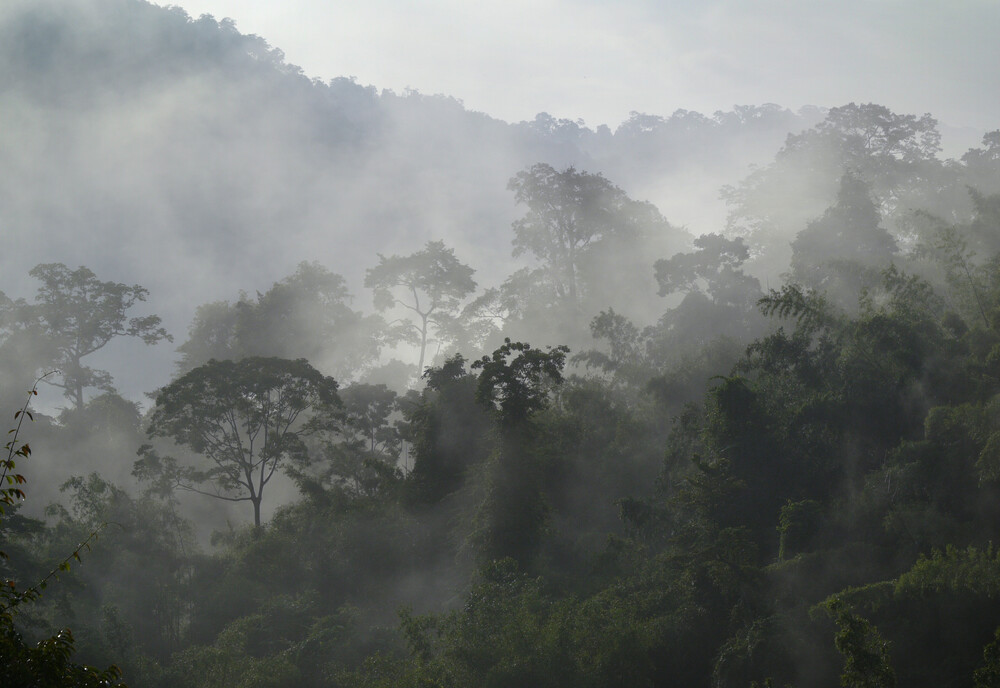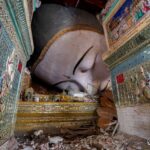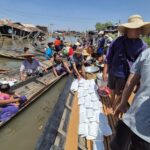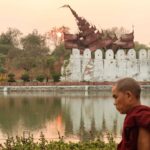INEB’s Eco-Temple Community Development Project
By Cedric Boudry
Thailand’s national forest corridor from Phukheio-Namnow to Dong Phayayen-Kao Yai
In recent decades, Thailand has been facing the consequences of mass deforestation caused by the expansion of industrial agriculture and commercial lumber. Today, Thailand’s forested areas account for 37% of land surface, ranking lowest in South East Asia. This percentage has been rising, however, since the “Royal Reforestation Project in Honor of King Bhumibol Adulyadej (Rama IX)”* was initiated in 1993, in response to these critical losses of forest cover. This project has put massive land and watershed areas throughout Thailand under governmental protection and management, in order to revive bio-diversity and freshwater reserves, vital to the survival of rural populations and climate change mitigation. Reforestation and conservation have seen a boon [merit] since then as Buddhist groups and individual landowners have actively engaged in reforestation activities.
Since 2012, however, there has been a lack of supervision as the management of these protected forest areas is in the process of being transferred from the Forestry Department to the Department of National Parks, Wildlife and Plant Conservation (DNP). With lack of clear jurisdiction and funding, the responsibilities of these two agencies have become blurred, which—according to the International Network of Engaged Buddhists (INEB) and the International Union for Conservation of Nature (IUCN)—has resulted in the fringes of these protected forest complexes being progressively razed for the use of export-oriented agriculture or other businesses.
Local, Buddhist forest monasteries have tried to prevent such land grabbing and have called for effective governmental surveillance and surveying of the land. INEB and IUCN have supported these efforts and have recently drafted the “Management Framework for Ecological Corridors between Forest Complexes”, which aims at connecting into one ecological corridor separate protected areas, specifically the Phukheio-Namnow and the World Heritage Dong Phayayen-Khao Yai Forest Complexes in the North-East. This interconnectedness would improve the resilience and health of the protected forests, allow for better conservation of biodiversity and watersheds, and improve local populations to engage in conservation efforts, in addition to reducing the likelihood of wildlife trafficking. This proposal will be submitted to the DNP within a year as soon as all surveys and data have been collected and analyzed.
In parallel to these agricultural and logging issues, Thailand is facing an energy crisis and looking for ways to meet rising demand. In seeking ways to increase its national production of electricity, green energy has been one direction of development, specifically wind farms. In fact, only 0.2% of Thailand’s land mass holds the best conditions for wind farming, and some of it is reserved for agricultural purposes or protected forest areas. To overcome these barriers, the Agricultural Land Reform Office (Sor Por Kor) of the Thai government has unilaterally allowed both foreign and public/private wind farm companies to use these lands. Despite one court case by a group of local villagers to contest the construction of a wind farm on Sor Por Kor land, other wind farms on such governmental land have continued to develop as they were judged beneficial to local populations. This authority of these actions has been further bolstered by the use of Article 44 by the Thai military junta’s National Council for Peace and Order which allows it to issue orders regardless of existing laws or regulations.
Wind farms [from Huay Bong to the Dong Phayayen-Khao Yai] are growing fast in Thailand’s North East [from Chaiyapoom to Nakorn Ratchasima], where the meteorological conditions are more favorable. It has come to INEB’s attention that some wind farms have been built or are planned to be built close to these protected forest complexes, and questions about the impact of the construction process and continued use of wind turbines on biodiversity have risen. Without proper surveying the effects of wind farming in these areas, reforestation efforts could be nullified, and damage to the vital watershed areas could impair the lifestyles of rural populations. As such, a consideration of the effect of this development is needed. Further, the rationale for their construction on protected land must be questioned. There have been in fact investigations of collusion between Thai governmental workers and wind energy companies.
These issues highlight the question of not only “what” (clean energy vs. fossil fuels) but also “how” (the development of clean energy to resuscitate the environment and improve the quality of life of people living in these regions vs. to increase corporate revenues and vested government interests while continuing to encourage the mindless waste of energy by an urbanized consumer citizenry). The method of deployment and a holistic environmental design system are key concerns of INEB’s Eco-Temple Community Development Project. Going forward, a coordinated effort is needed to realize the INEB/IUCN plan of connecting together preserved lands into a national forest corridor that is vital to the environmental wholeness of the entire region.
* The “Reforestation Campaign in Commemoration of the Royal Golden Jubilee” is a nature rehabilitation project being implemented to express loyalty and gratitude to our beloved King Bhumibol Adulyadej on His 50th Anniversary Accession to the Throne in 1996. His Majesty’s interest and support to forestry activities and conservation of nature was and still is active and highly appreciated by all. This project was approved by the Cabinet on February 1, 1994, which directed the project to be implemented according to the Royal Advice from Queen Sirikit that urged the Ministry of Agriculture and Cooperatives to devise urgent measures to halt deforestation and rehabilitate watershed areas of the country.
This map shows the national forest corridor in the yellow dotted line being connected from Phukheio-Namnow (upper left) to Khao Yai National Park in the large brown colored area.

Sources:
- Thai Post: “Illegal Occupation of Land under the Royal Golden Jubilee Project reflects the lack of government’s will to restore forests”, 5 July 2020
- Thai Post: “OAG Starts wind farm ‘collusion’ inquiry”, 27 February 2017. https://www.bangkokpost.com/thailand/politics/1205381/oag-starts-wind-farm-collusion-inquiry
- Uldrich Eder, “Wind farms and the Sor Por Kor case”, 5 February 2017. https://www.linkedin.com/pulse/wind-farms-sor-por-kor-case-dr-ulrich-eder/
- “Section 44 collapses the administrative court judgment Unlock the land lock of the NACC, promoting the energy business” https://ilaw.or.th/node/4585
Map image: WCS Thailand






